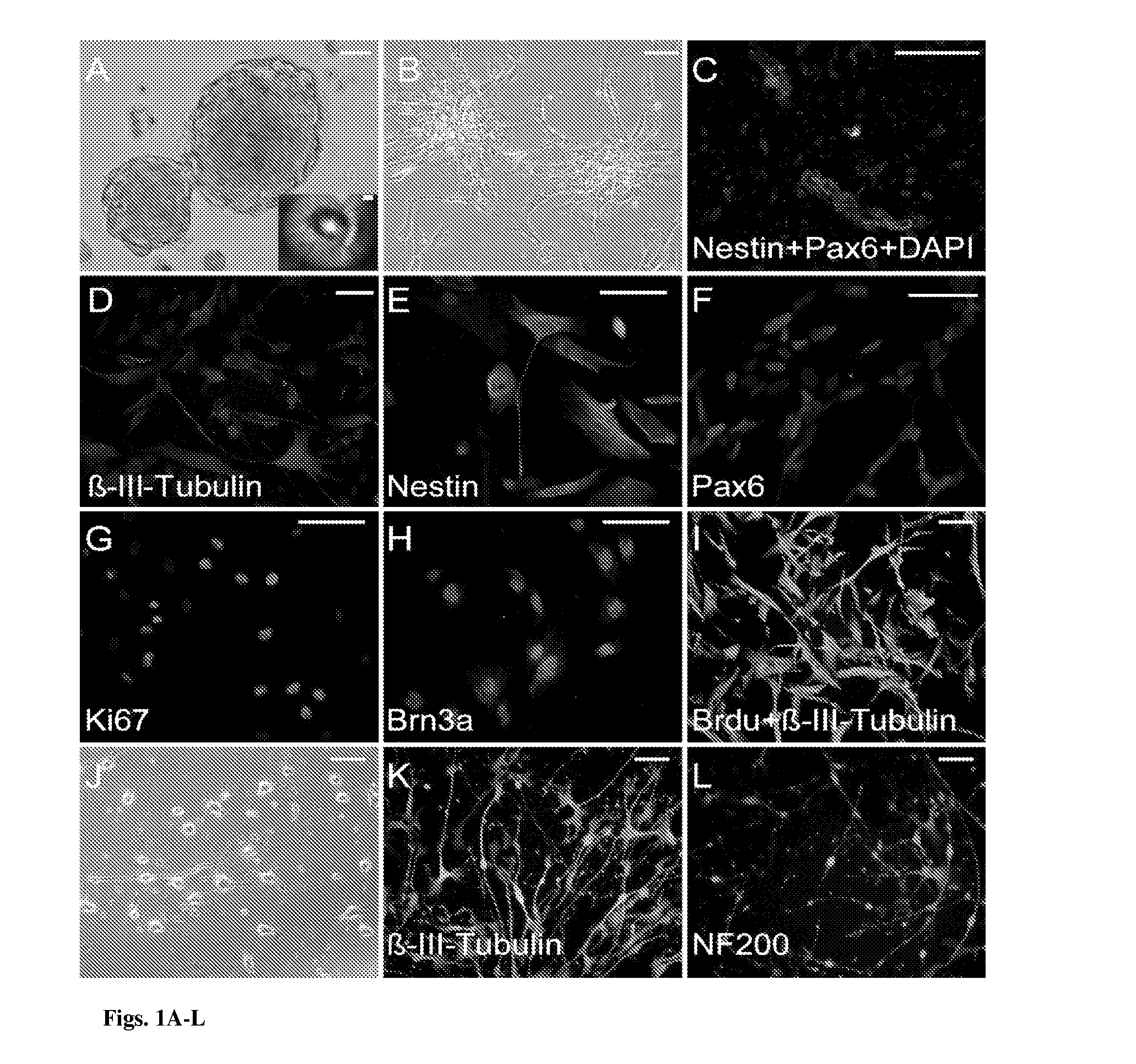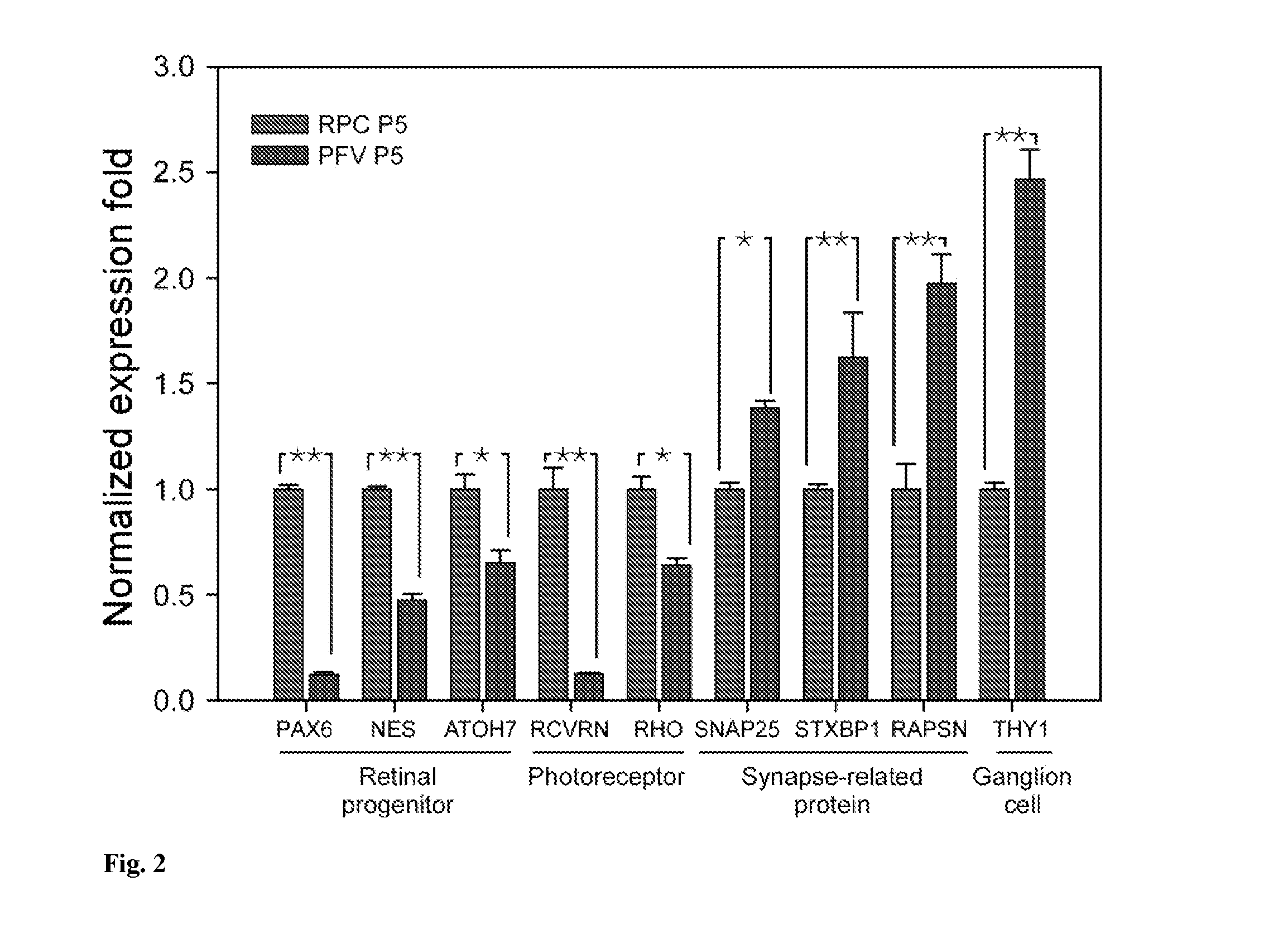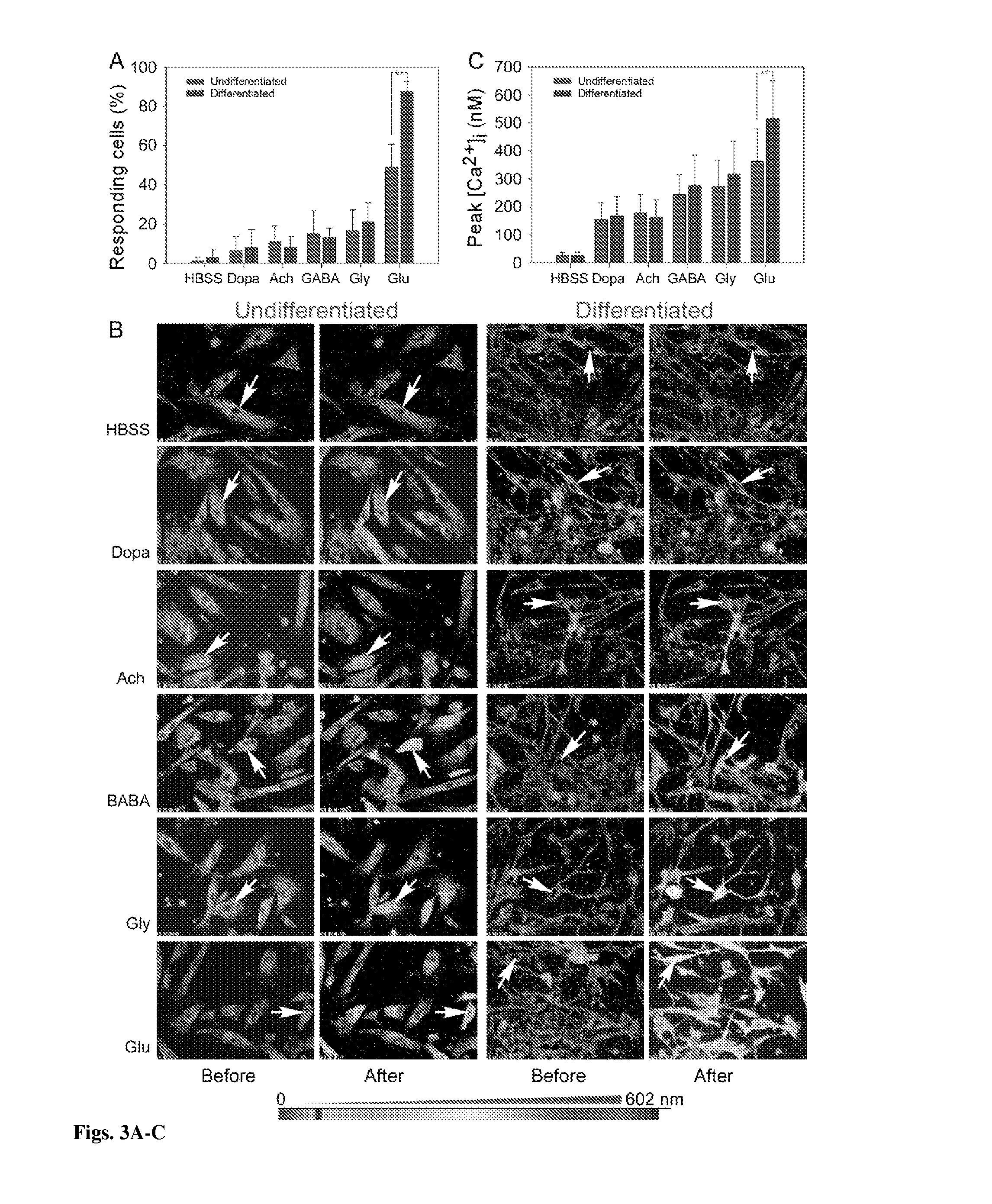Human Persistent Fetal Vasculature Neural Progenitors for Transplantation in the Inner Retina
a neural progenitor and inner retina technology, applied in the field of cell therapy, can solve the problems of ineffective cure or treatment for rgcs loss, degeneration of inner retina, and major threat to vision, and achieve the effect of increasing the expression of insulin-like growth factor-1
- Summary
- Abstract
- Description
- Claims
- Application Information
AI Technical Summary
Benefits of technology
Problems solved by technology
Method used
Image
Examples
example 1
Neuroprotection of IGF-1 on Retinal Ganglion Cells
[0076]As was described above, neuronal progenitor cells from human persistent fetal vasculature incorporate into the retinal ganglion cell (RGC) layer after transplantation. To study whether hNPPFV cells could function as serogate vehicles for local delivery of neuroprotective factors, the effects of IGF-1 were evaluated. RGCs co-cutured with IGF-1-transfected hNPPFV cells displayed significantly enhanced survival, neurite extension and branching, while selective inhibitors of IGF-1 signaling blocked these responses. The findings indicate that transfected hNPPFV cells abundantly deliver IGF-1 and significantly invigorate neuronal survival. The results also indicate that local cell-based delivery of selected neurotrophic factors to protect and rehabilitate host RGCs under disease conditions.
[0077]Cells have generally been used as a carrier to load a specific gene to scale up or scale down the expression in a signaling pathway or gene ...
example 2
High Throughput Assay for Modulators of Neural Pathways
[0100]hNPPFV cells expressing various reporter sequences such as that described above are useful in high-throughput screening for drug discovery and related applications. hPPFVs are neurons and are thus used as substitutes for other neuronal cells in high-throughput assays. Since hNPPFV cells have RGC-like characteristics, they can be utilized in both undifferentiated and differentiated cells.
[0101]hNPPFV cells have many advantages compared to other cells used for such assays. For example, primary RGCs are difficult to culture and poorly survive culture conditions necessary for high-throughput screening. Unlike primary RGC cultures, hNPPFV cells have a prolonged survival in tissue culture and can easily accept ectopic reporter gene sequences, which function as reporters for specific cellular activity. hPPFVs may be used as substitute cells for primary RGCs. Therefore, large numbers of molecules may be assayed for neurotrophic ac...
PUM
 Login to View More
Login to View More Abstract
Description
Claims
Application Information
 Login to View More
Login to View More - R&D
- Intellectual Property
- Life Sciences
- Materials
- Tech Scout
- Unparalleled Data Quality
- Higher Quality Content
- 60% Fewer Hallucinations
Browse by: Latest US Patents, China's latest patents, Technical Efficacy Thesaurus, Application Domain, Technology Topic, Popular Technical Reports.
© 2025 PatSnap. All rights reserved.Legal|Privacy policy|Modern Slavery Act Transparency Statement|Sitemap|About US| Contact US: help@patsnap.com



